
How to Use MQ-9 Breakout : Examples, Pinouts, and Specs
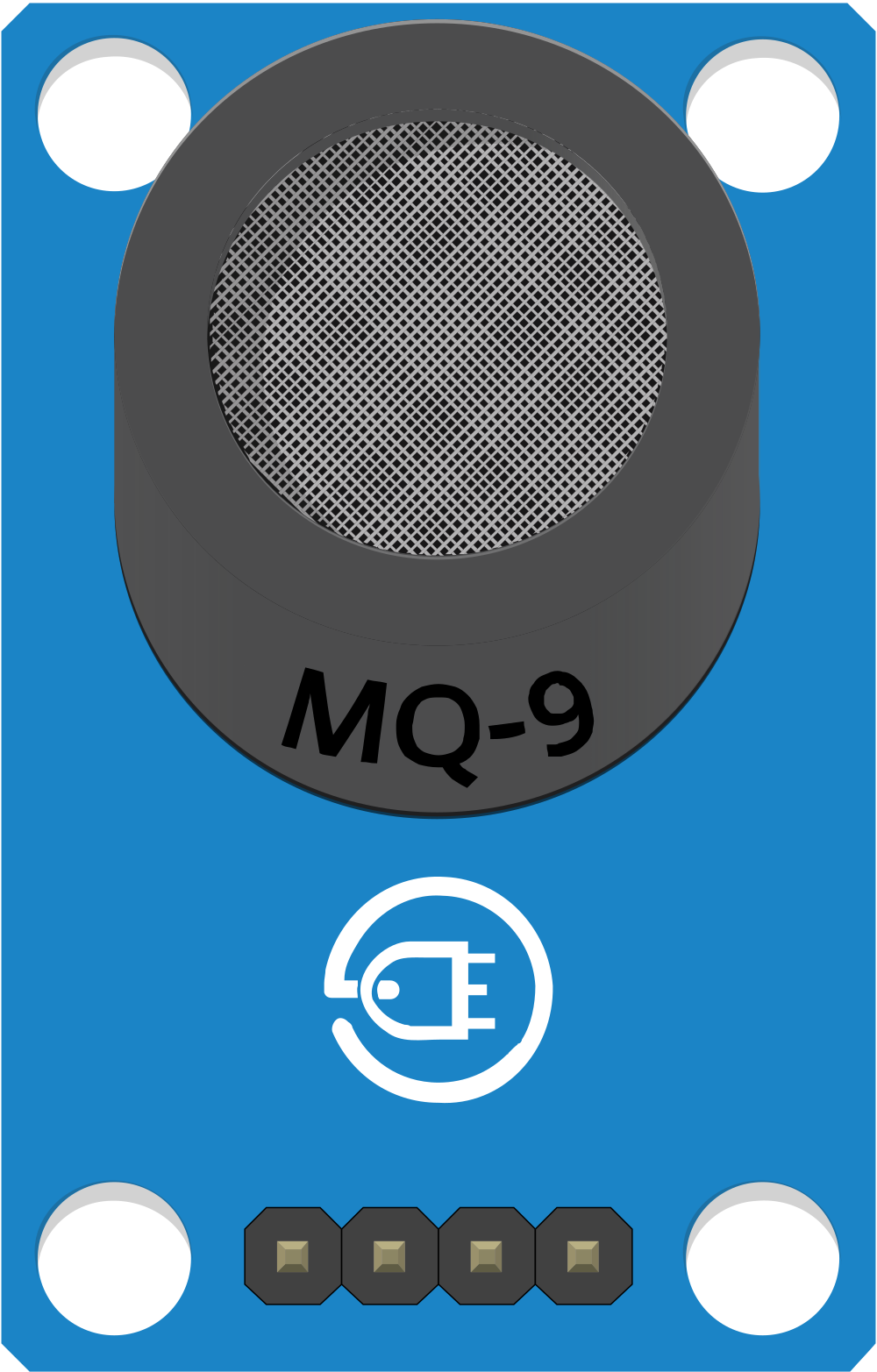
 Design with MQ-9 Breakout in Cirkit Designer
Design with MQ-9 Breakout in Cirkit DesignerIntroduction
The MQ-9 Breakout is an essential tool for integrating the MQ-9 sensor into electronic projects. The MQ-9 sensor is capable of detecting carbon monoxide (CO) and combustible gases, making it ideal for safety applications in domestic and industrial settings. Common applications include gas leak detection systems, air quality monitoring, and early fire detection.
Explore Projects Built with MQ-9 Breakout
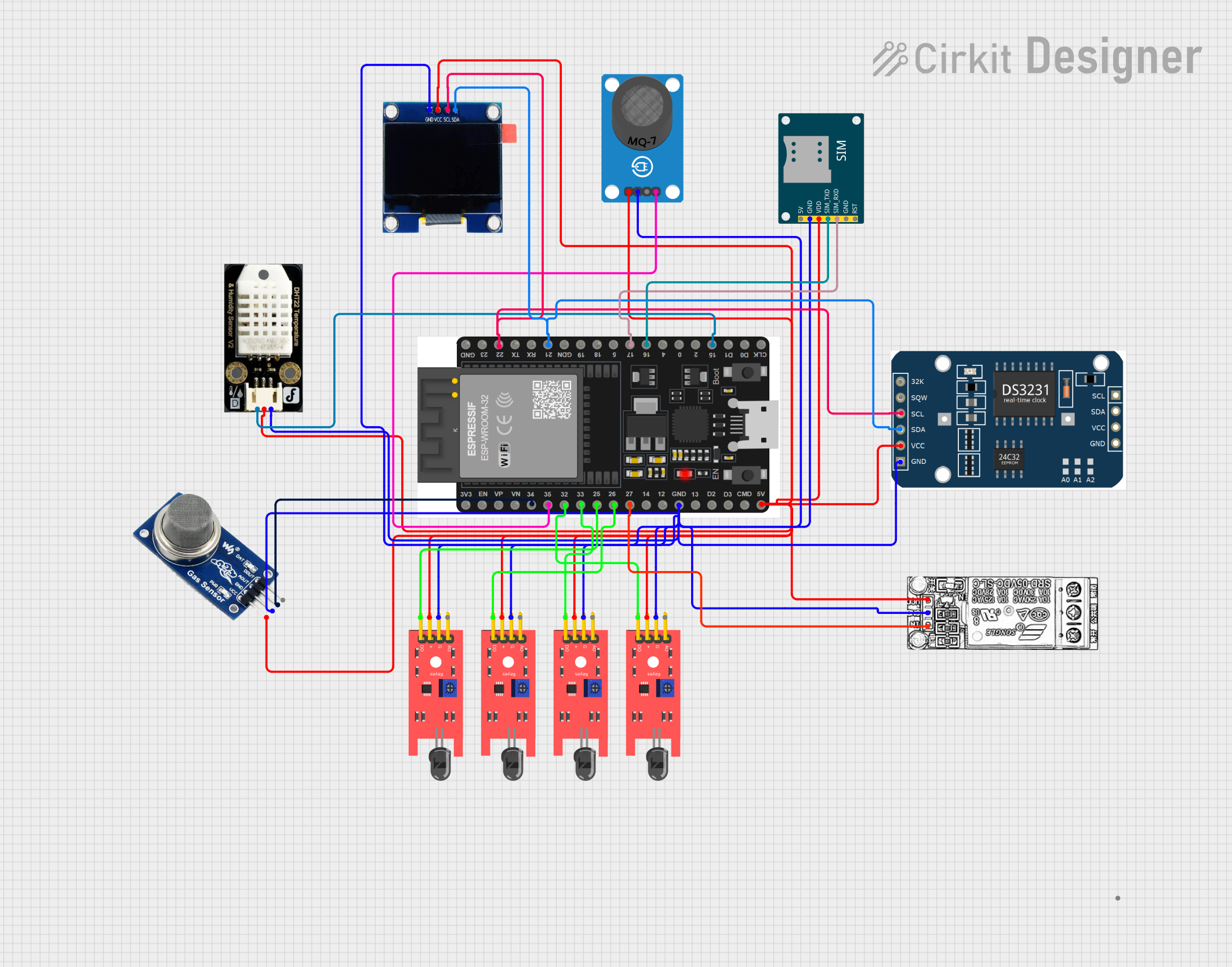
 Open Project in Cirkit Designer
Open Project in Cirkit Designer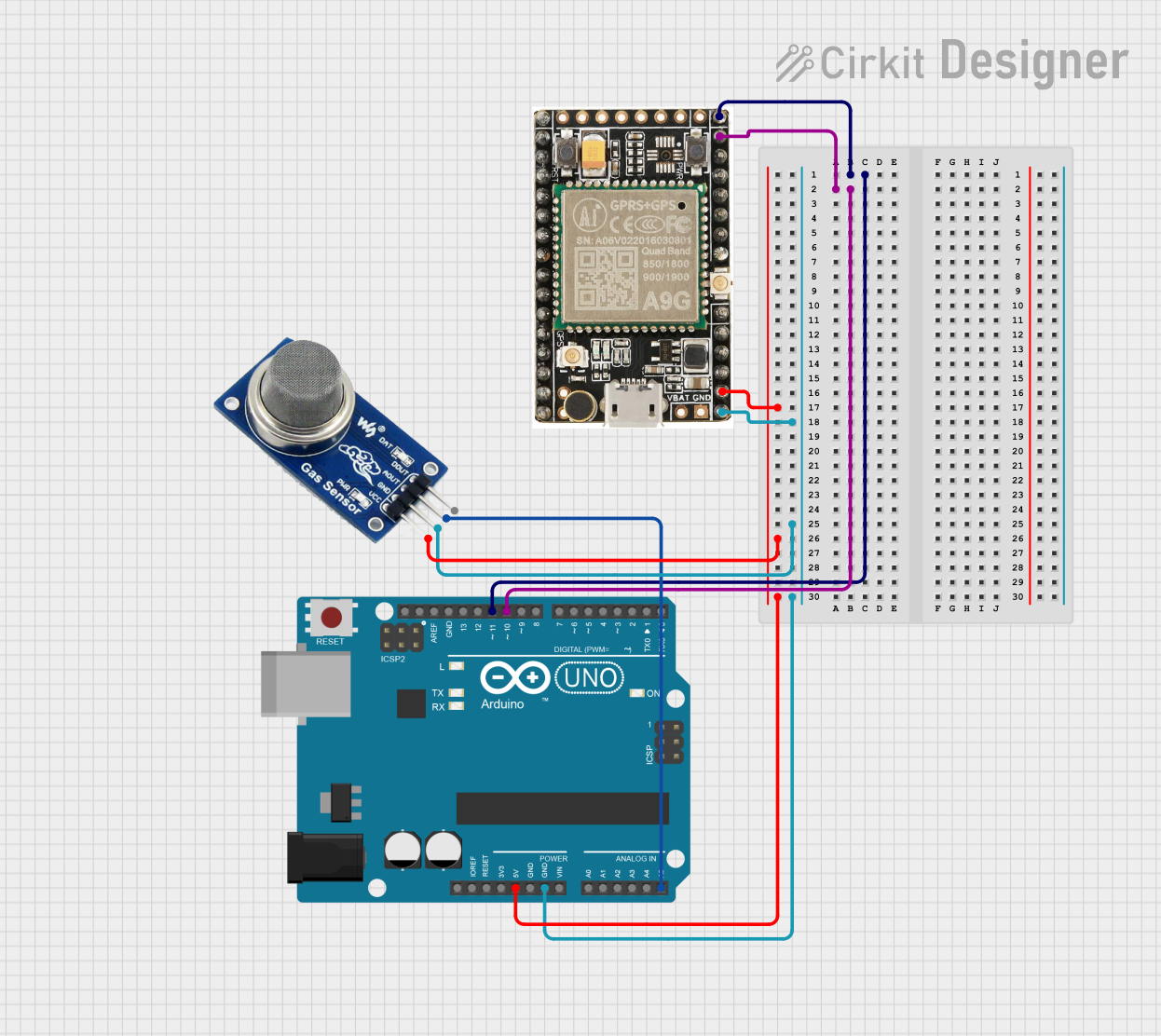
 Open Project in Cirkit Designer
Open Project in Cirkit Designer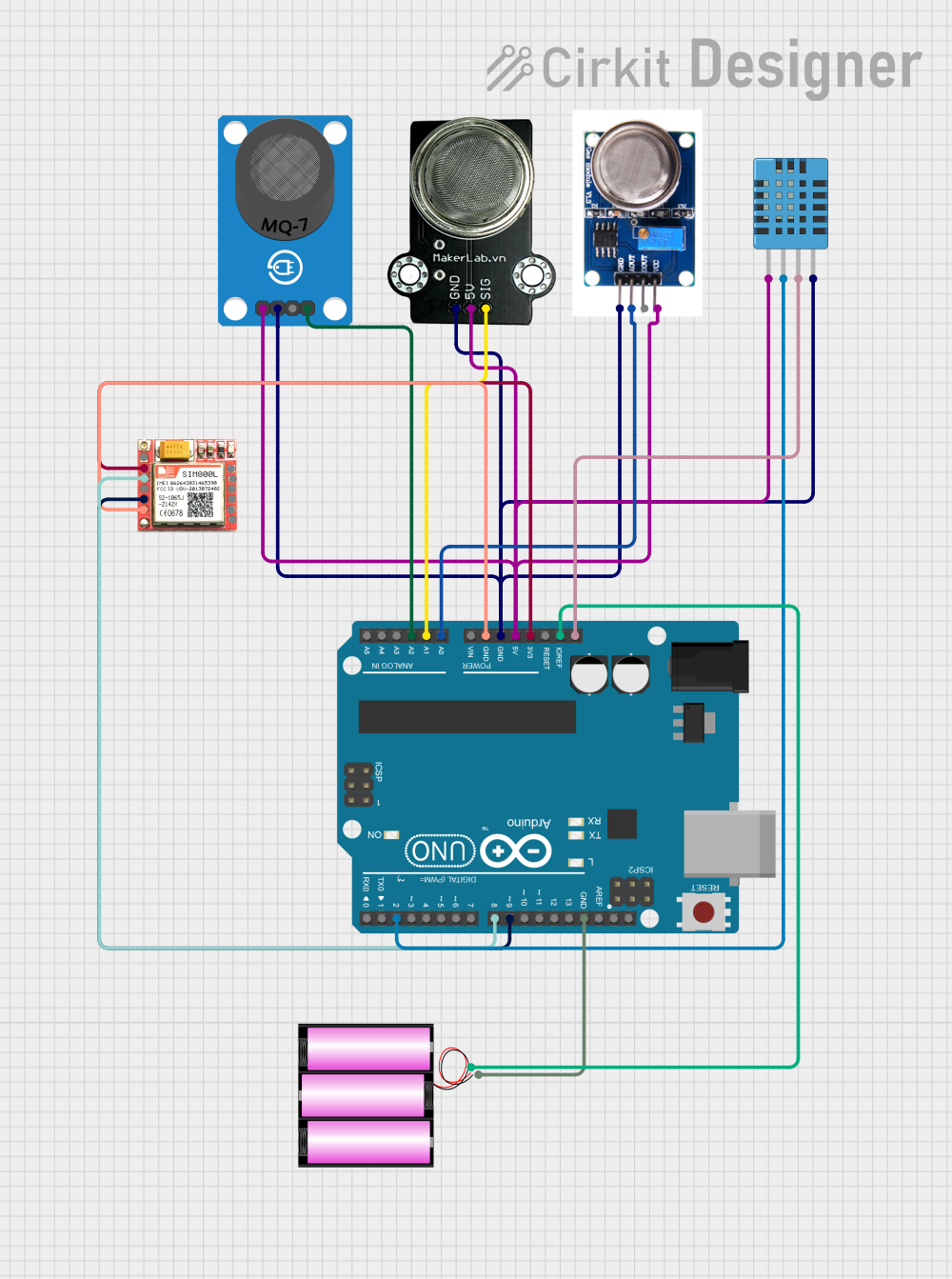
 Open Project in Cirkit Designer
Open Project in Cirkit Designer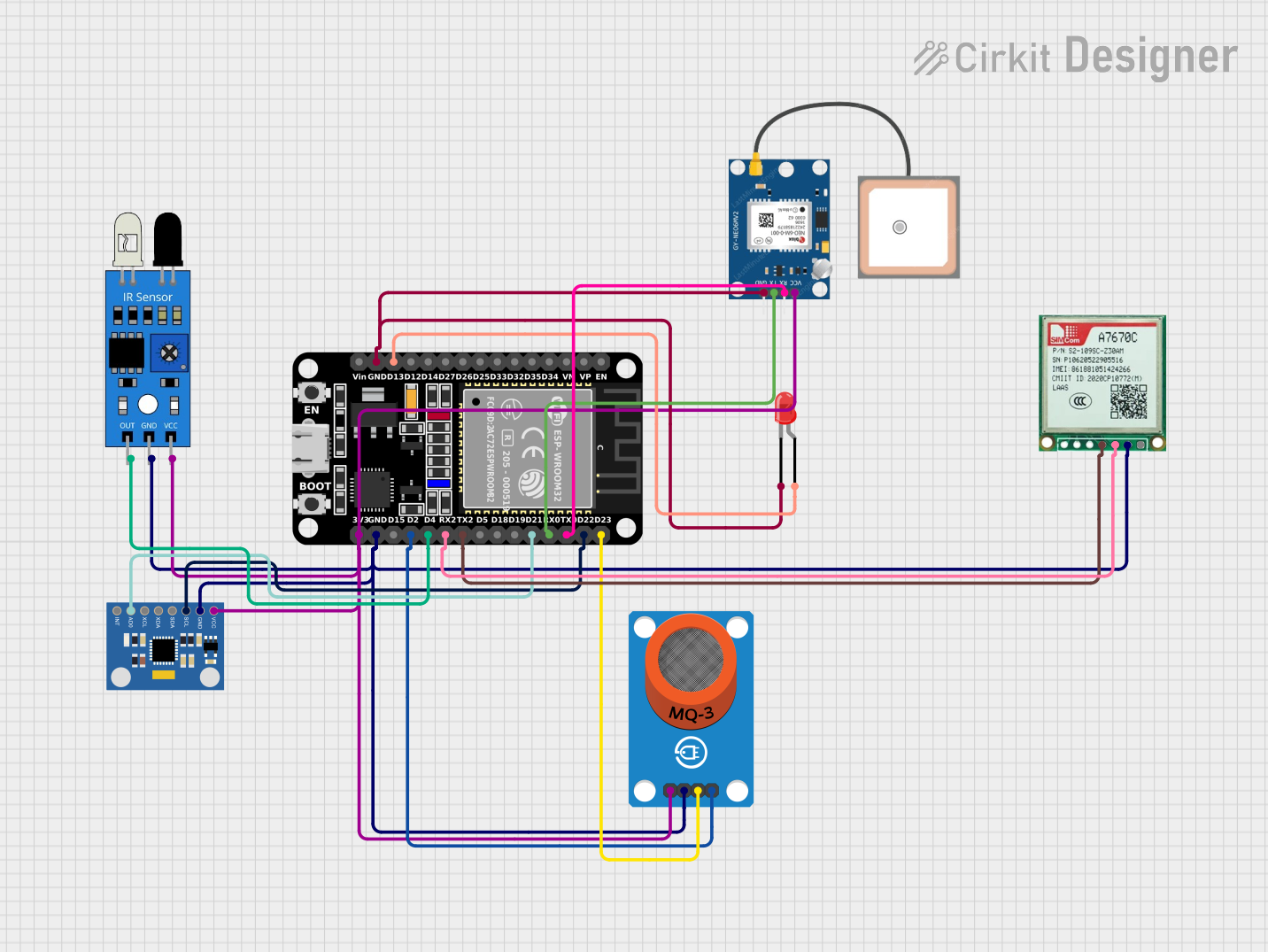
 Open Project in Cirkit Designer
Open Project in Cirkit DesignerExplore Projects Built with MQ-9 Breakout

 Open Project in Cirkit Designer
Open Project in Cirkit Designer
 Open Project in Cirkit Designer
Open Project in Cirkit Designer
 Open Project in Cirkit Designer
Open Project in Cirkit Designer
 Open Project in Cirkit Designer
Open Project in Cirkit DesignerTechnical Specifications
General Specifications
- Sensor Type: MQ-9 Gas Sensor
- Detection Gases: Carbon monoxide (CO), flammable gases
- Supply Voltage (VCC): 5V DC ± 0.1V
- Heater Voltage (VH): 5V DC ± 0.1V
- Heater Current: 180mA (typical)
- Load Resistance: Adjustable via onboard potentiometer
- Analog Output Voltage (VA): 0-5V (proportional to gas concentration)
Pin Configuration and Descriptions
| Pin Number | Pin Name | Description |
|---|---|---|
| 1 | VCC | Power supply (5V DC) |
| 2 | GND | Ground |
| 3 | DOUT | Digital output (TTL logic level) |
| 4 | AOUT | Analog output (0-5V, gas concentration) |
| 5 | H | Heater control (connect to 5V for heating) |
Usage Instructions
Integration into a Circuit
- Power Supply: Connect the VCC pin to a 5V power supply and the GND pin to the ground of your system.
- Heater Activation: Connect the H pin to 5V to activate the sensor's heater. The heater must be on for the sensor to operate correctly.
- Analog Output: Connect the AOUT pin to an analog input on your microcontroller to read the gas concentration levels.
- Digital Output (Optional): The DOUT pin can be connected to a digital input on your microcontroller if you wish to use the sensor's built-in comparator for simple threshold-based detection.
Best Practices
- Preheat the sensor for at least 24 hours before initial use for optimal performance.
- Calibrate the sensor in the environment where it will be used to ensure accurate readings.
- Avoid exposure to high concentrations of alcohol, smoke, and other volatile organic compounds to prevent sensor poisoning.
- Use the onboard potentiometer to adjust the load resistance and calibrate the sensor's sensitivity.
Example Arduino Code
// MQ-9 Breakout Example Code for Arduino UNO
int analogPin = A0; // Analog input pin connected to AOUT on MQ-9
int sensorValue = 0; // Variable to store the sensor value
void setup() {
Serial.begin(9600); // Initialize serial communication at 9600 baud
}
void loop() {
sensorValue = analogRead(analogPin); // Read the sensor value
Serial.print("Gas concentration: ");
Serial.println(sensorValue); // Print the sensor value to the serial monitor
delay(1000); // Wait for 1 second before reading the value again
}
Troubleshooting and FAQs
Common Issues
- Sensor Not Responding: Ensure the heater is powered and has been preheated for the recommended time.
- Inaccurate Readings: Verify that the sensor has been calibrated correctly and is not exposed to contaminants.
- No Output Signal: Check all connections, especially the power supply and ground, for proper contact.
FAQs
Q: How long does the MQ-9 sensor last? A: The lifespan of the MQ-9 sensor is typically around 5 years, depending on usage and environmental conditions.
Q: Can the MQ-9 detect natural gas? A: Yes, the MQ-9 is sensitive to flammable gases, including natural gas.
Q: What is the purpose of the onboard potentiometer? A: The potentiometer adjusts the load resistance, which changes the sensor's sensitivity to gas concentrations.
Q: How do I calibrate the sensor? A: Calibration involves adjusting the potentiometer while exposing the sensor to a known concentration of the target gas until the desired output is achieved.
For further assistance, please refer to the manufacturer's datasheet or contact technical support.